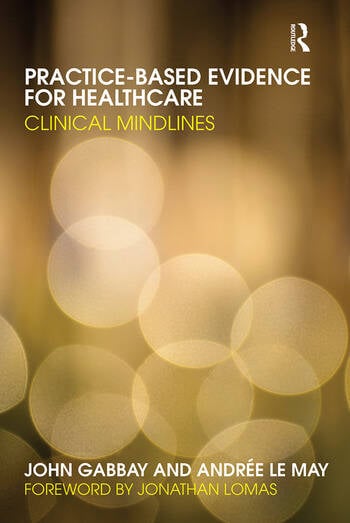Knowledge exchange in dental practice
My DPhil research out here at Oxford has taken me into (for me) some fascinating literature about the nature of knowledge and research. Having begun with what I now realise was a naive question - how to help clinicians practice more evidence-based dentistry - I have moved towards trying to understand better how research knowledge does or could fit in alongside (or blend with) the many other sources of knowledge that we all employ in our daily decision-making.
What is knowledge?
But first, what do I mean by knowledge? Here are a couple of definitions that inform my broad concept of knowledge:- Collation of information for a particular purpose, intended to be useful (Sensky 2002)
- Facts, information, and skills acquired through experience or education (Oxford Dictionaries)
- Awareness or familiarity gained by experience of a fact or situation (Oxford Dictionaries)
Research is one form of explicit or codified knowledge. The research may be quantitative or qualitative and be assessed as robust or not, and relevant or not. But what Polanyi and Nonaka (and others) suggested is that this explicit knowledge first requires tacit knowledge. We don't consciously sit down and appraise what we know or don't know unless, perhaps, we're sitting an exam and realise we can or can't answer a question. Instead we perceive that we need to find out about something before we realise we need to know about X.
Nonaka suggested that we externalise our tacit knowledge using metaphors or stories, combine that explicit knowledge with other sources of information (perhaps a colleague's experiences or some research), then we internalise it, making our own sense of the combined information and using it in a way that we may find difficult to describe.
This is in keeping with other theories - particularly adult learning theories - that recognise we are not empty buckets waiting to be filled with knowledge but individuals with rich experiences who absorb, adapt, reject, or accept then reject new knowledge.
Gabbay and Le May found that General Medical Practitioners in a "good" practice used many other sources of knowledge than just research to make patient-centred decisions. Those other sources included colleagues, opinion leaders, their own experience, sales reps and patients. Estabrooks (2005) found that the majority of time nurses learnt their clinical practice knowledge from social interactions and experience, with a very small component coming from consulting research.
What influences knowledge use?
From personal experience this is not surprising. But if we think that research use is likely to be beneficial to patients then we may need to understand better the existing ways in which knowledge is taken up and exchanged. My reading has now included several traditions outside of the healthcare literature. Here are some examples of what they think influences explicit or research knowledge use:
From
healthcare literature:
- Context
- Nature of the knowledge
- Process of knowledge exchange
- Professional boundaries
- Organisational learning (including tacit learning)
- Competition for the potential user’s time / attention
- Individual behaviour and motivation
What to do?
The way in which knowledge is used is probably a lot more chaotic than many in the EBD/EBM world would like to think. This is where I began my DPhil - thinking that I could develop some kind of intervention to help dentists use research more in the traditional linear approach - ask, find, search... But now I realise we don't understand enough of how knowledge is exchanged within the primary dental care world, and how the mechanisms that allow other sorts of knowledge to move about might be used to help research knowledge do the same.
And so I move on to study how and why given contexts and mechanisms influence dentists' uptake of knowledge before trying to help them use research with all their other knowledge sources.
References
Oxford Dictionaries: http://www.oxforddictionaries.com/definition/english/knowledge
Estabrooks, C. A., Rutakumwa, W., O’Leary, K. A., Profetto-McGrath, J., Milner, M., Levers, M. J., & Scott-Findlay, S. (2005). Sources of practice knowledge among nurses. Qualitative health research, 15(4), 460-476.
Polanyi, M., & Sen, A. (1983). The tacit dimension (pp. 21-25). Gloucester, MA: Peter Smith.
Sensky T. Advances in Psychiatric Treatment. 2002 September 1, 2002;8(5):387-95

